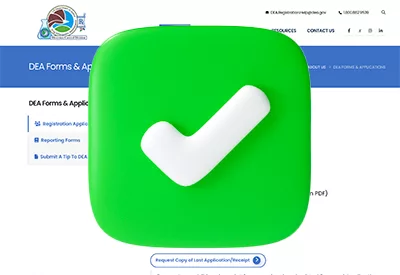Strategies for Managing Panic Disorder
Marianne E. Silva, LCSW. Senior Clinical Social Worker, U.S. Department of Veterans Affairs.
Ms. Silva has no financial relationships with companies related to this material.
Learning objectives:
After reading this article, you should be able to:
1. Understand the diagnostic criteria for panic disorder.
2. Explain some of the tools to assess panic disorder.
3. Recognize the efficacy of cognitive-behavioral therapy (CBT) as a treatment option for panic disorder.
Your new client, "Sarah," tells you she was shopping at the mall when she suddenly felt her heart start to race. Within minutes, she was overwhelmed with a wave of intense fear. She began to sweat profusely, and her hands started trembling. Gasping for breath, she felt as if she was choking and couldn't get enough air. She experienced dizziness and worried that she might faint. Panic consumed her as she feared she was having a heart attack or losing control of her mind. Desperate to escape the situation, she abandoned her shopping cart and rushed out of the mall. The whole experience lasted approximately 10 minutes. Since that first incident, Sarah has experienced several similar episodes, sometimes in crowded places like grocery stores or the commuter rail. She has started avoiding these situations out of fear of having another panic attack. The constant worry and avoidance have significantly impacted her daily life, and she seeks your help to better understand and manage her symptoms.
Most psychotherapists would immediately recognize Sarah’s symptoms as panic disorder, a relatively common psychiatric condition affecting 2.7% of adults in any given year. The median age of onset of panic disorder is 24 years of age, and it is about twice as common in women. Panic disorder is uncommon in early childhood, with peaks of onset occurring in late adolescence and in the mid-30s. It is unusual for panic disorder to begin in individuals older than 45 years of age (See: NIMH, Panic Disorder https://www.nimh.nih.gov/health/statistics/panic-disorder).
Diagnosis
Here's a step-by-step guide to help you diagnose panic disorder according to the DSM-5-TR:
- Identify the core symptoms of panic disorder: The DSM-5-TR defines panic disorder as recurrent, unexpected panic attacks followed by at least one month of persistent concern or worry about having more panic attacks or their consequences, or significant maladaptive behavior related to the attacks (Arlington, VA: The Diagnostic and Statistical Manual of Mental Disorders, Fifth Edition, Text Revision (DSM-5-TR) 2022; Cackovic C et al, StatPearls [Internet]. Treasure Island (FL): StatPearls Publishing; 2023).
- Assess the presence of panic attacks: A panic attack is an abrupt surge of intense fear or discomfort that reaches a peak within minutes and includes four or more of the following symptoms:
- Palpitations, pounding heart, or accelerated heart rate
- Sweating
- Trembling or shaking
- Sensations of shortness of breath or smothering
- Feeling of choking
- Chest pain or discomfort
- Nausea or abdominal distress
- Feeling dizzy, unsteady, lightheaded, or faint
- Chills or heat sensations
- Paresthesias (numbness or tingling sensations)
- Derealization (feelings of unreality) or depersonalization (being detached from oneself)
- Fear of losing control or going `crazy
- Fear of dying
- Evaluate the frequency and unpredictability of panic attacks: To qualify for a diagnosis of panic disorder, the panic attacks must be recurrent and unexpected. A single panic attack does not qualify for the disorder.
- Examine potential causes and rule out other diagnoses: It's crucial to determine whether the panic attacks are due to a substance, a medical condition, or another mental health disorder. Panic attacks that are directly related to substance use, medical conditions, or better explained by another mental health disorder should not be diagnosed as panic disorder.
- Assess the impact of panic attacks on the individual's life: The presence of persistent concern or worry about having more panic attacks, or significant maladaptive behavior related to the attacks, should be evident for at least one month following a panic attack. This can include avoiding exercise, unfamiliar places, or situations that might trigger an attack (Manjunatha, N., & Ram, D. (2022). Panic disorder in general medical practice- A narrative review. Journal of family medicine and primary care, 11(3), 861–869. https://doi.org/10.4103/jfmpc.jfmpc_888_21).
Psychotherapy for Panic Disorder
The gold standard treatment approaches for panic disorder include cognitive-behavioral therapy (CBT) and pharmacotherapy (David D, Cristea I, Hofmann SG. Why Cognitive Behavioral Therapy Is the Current Gold Standard of Psychotherapy. Front Psychiatry. 2018 Jan 29;9:4. doi: 10.3389/fpsyt.2018.00004. PMID: 29434552; PMCID: PMC57974; Milrod, B., Leon, A. C., Busch, F., Rudden, M., Schwalberg, M., Clarkin, J., Aronson, A., Singer, M., Turchin, W., Klass, E. T., Graf, E., Teres, J. J., & Shear, M. K. (2007). A randomized controlled clinical trial of psychoanalytic psychotherapy for panic disorder. The American journal of psychiatry, 164(2), 265–272. https://doi.org/10.1176/ajp.2007.164.2.2). We’ll focus on CBT in this article, but pharmacotherapy is quite effective as well, and typically includes selective serotonin reuptake inhibitors (SSRIs) or short-term use of benzodiazepines.
Let's dive into the key components of CBT and how to apply them effectively with your clients. Remember that not all components may be applied in every case; your approach should be tailored to each client's unique needs.
1. Breathing and Relaxation Exercises: Teaching clients relaxation techniques and proper breathing can help them manage their anxiety and gain a sense of control during panic attacks. Deep breathing exercises and progressive muscle relaxation are common methods used in CBT to reduce anxiety.
2. Self-Monitoring: Encourage clients to monitor their thoughts, feelings, and behaviors during and between therapy sessions. Self-monitoring helps clients become more aware of their triggers, patterns, and progress. This increased awareness can lead to better management of panic attacks and a reduction in their frequency and severity.
3. Psychoeducation: Educating clients about panic disorder, its symptoms, and the fight-or-flight response can empower them to better understand their condition. This understanding can reduce the fear associated with panic attacks and help clients re-attribute panicky feelings to anxiety rather than more severe consequences, such as a heart attack or going crazy.
4. Cognitive Restructuring: Cognitive restructuring is at the heart of CBT. It involves helping clients identify their beliefs, appraisals, and assumptions about panic attacks. Teach clients to assess their cognitions by considering all available evidence and actively collecting new evidence.
For instance, clients may have automatic thoughts like, "If I panic, I will lose control." Encourage them to act as a scientist and test alternative hypotheses. This may lead them to conclude, "Even if I panic, I will not lose control," based on the evidence they gather.
5. Interoceptive Exposure: Interoceptive exposure helps clients become less fearful of, or even comfortable with, bodily sensations associated with panic. This involves provoking sensations that have been associated with panic attacks, such as dizziness, loss of balance, or increased heart rate (Boettcher, H., Brake, C. A., & Barlow, D. H. (2016). Origins and outlook of interoceptive exposure. Journal of behavior therapy and experimental psychiatry, 53, 41–51. https://doi.org/10.1016/j.jbtep.2015.10.009).
By practicing these techniques, clients learn that bodily sensations can indeed be provoked, that they spontaneously subside, and that they are not dangerous or followed by harmful consequences.
6. In Vivo Exposure: In vivo exposure involves constructing an individualized fear hierarchy and gradually exposing clients to their feared situations. Clients should stay in the feared situation (starting with less feared situations) until their anxiety levels substantially decrease.
During in vivo exposure experiences, clients should avoid using “safety-seeking behaviors,” such as walking close to structures for support or gripping the steering wheel tightly while driving.
Efficacy of CBT for Panic Disorder
A typical course of CBT for panic disorder will include 8 to 15 weekly sessions. A meta-analysis of 41 randomized placebo-controlled trials, which included a total of 2676 participants, reported that CBT was significantly more effective than placebo for a range of anxiety disorders with a moderate to large effect size (Carpenter, J. K., Andrews, L. A., Witcraft, S. M., Powers, M. B., Smits, J. A. J., & Hofmann, S. G. (2018). Cognitive behavioral therapy for anxiety and related disorders: A meta-analysis of randomized placebo-controlled trials. Depression and anxiety, 35(6), 502–514. https://doi.org/10.1002/da.22728). Studies report response rates in the 60% range, which is similar to response rates in studies of SSRIs.
CARLAT VERDICT:
Panic disorder is a terrifying condition for many of our clients, but it is quite responsive to a short course of CBT. We recommend that you incorporate these techniques into your repertoire.
Newsletters
Please see our Terms and Conditions, Privacy Policy, Subscription Agreement, Use of Cookies, and Hardware/Software Requirements to view our website.
© 2025 Carlat Publishing, LLC and Affiliates, All Rights Reserved.

_-The-Breakthrough-Antipsychotic-That-Could-Change-Everything.webp?t=1729528747)



